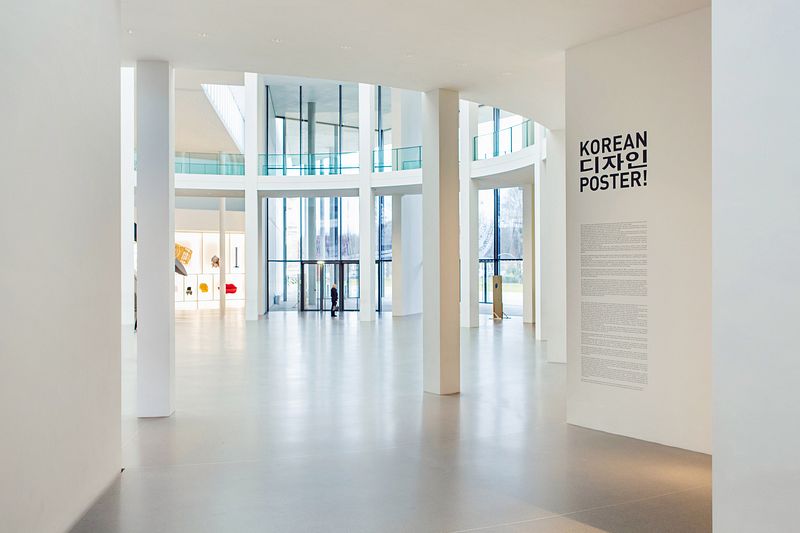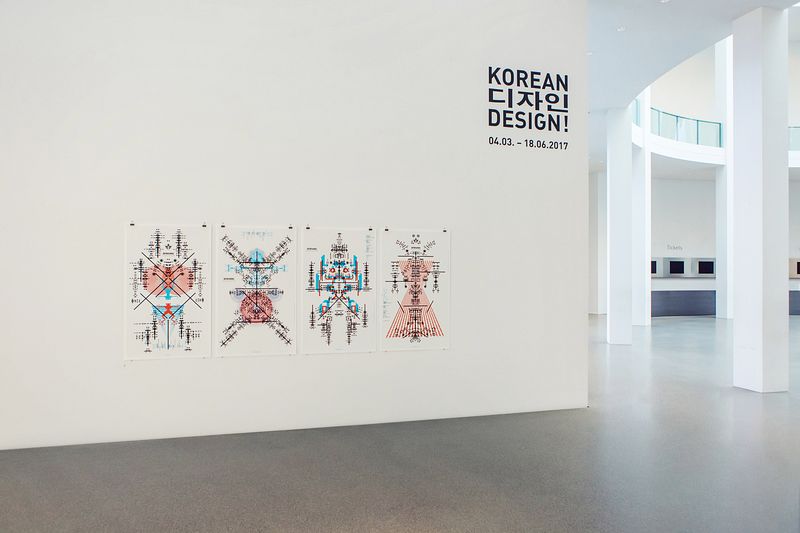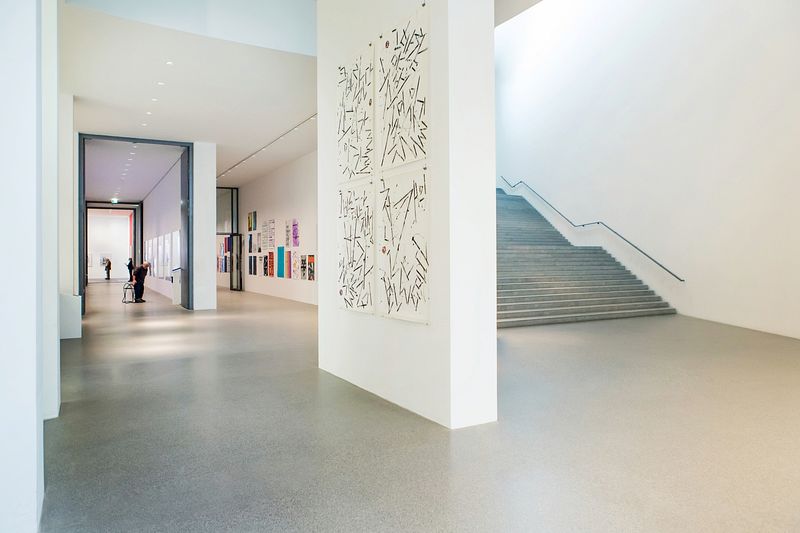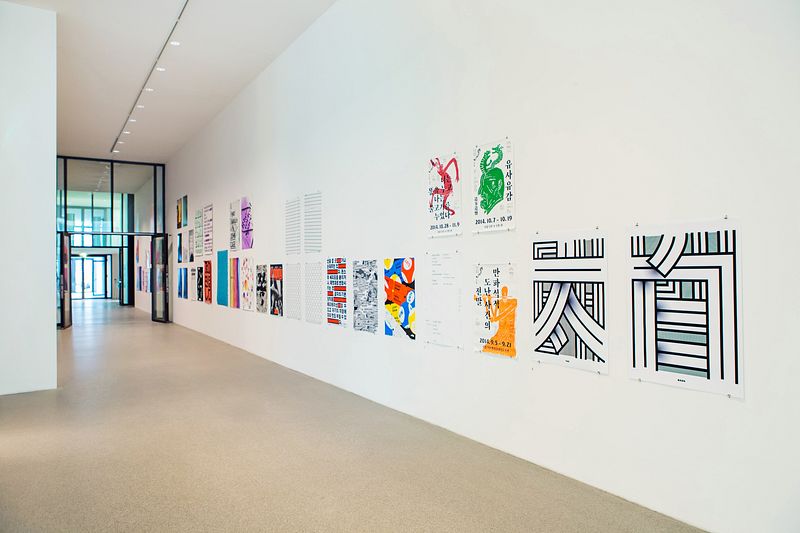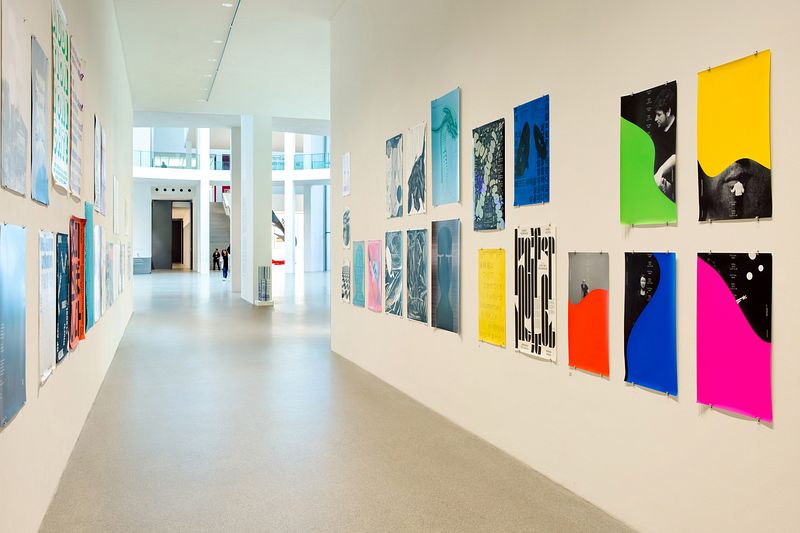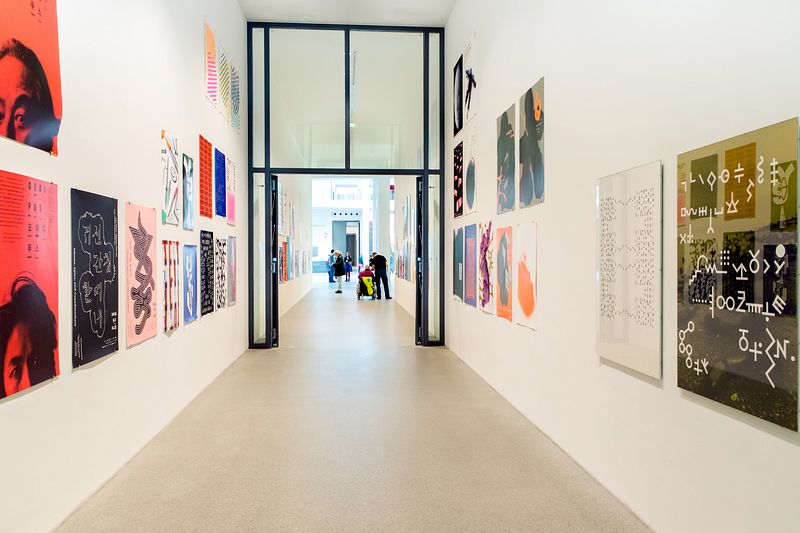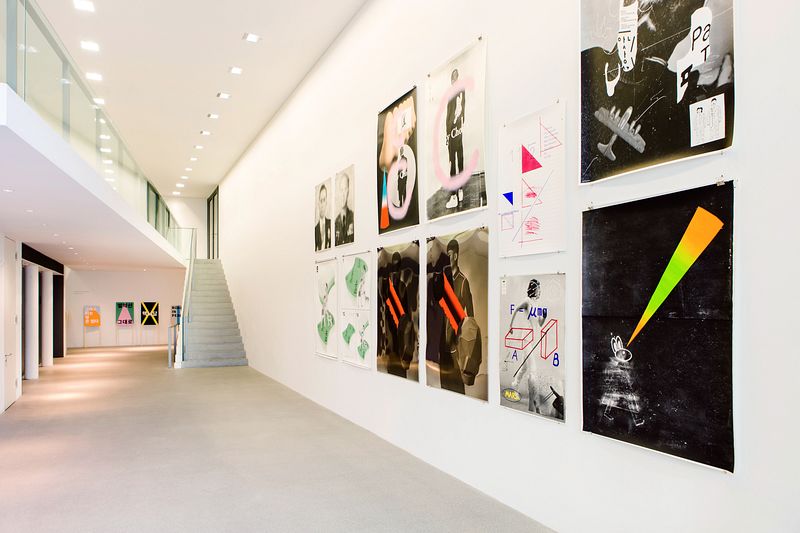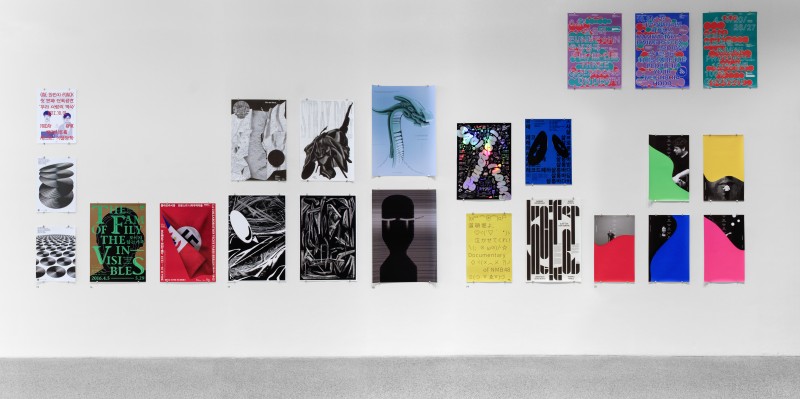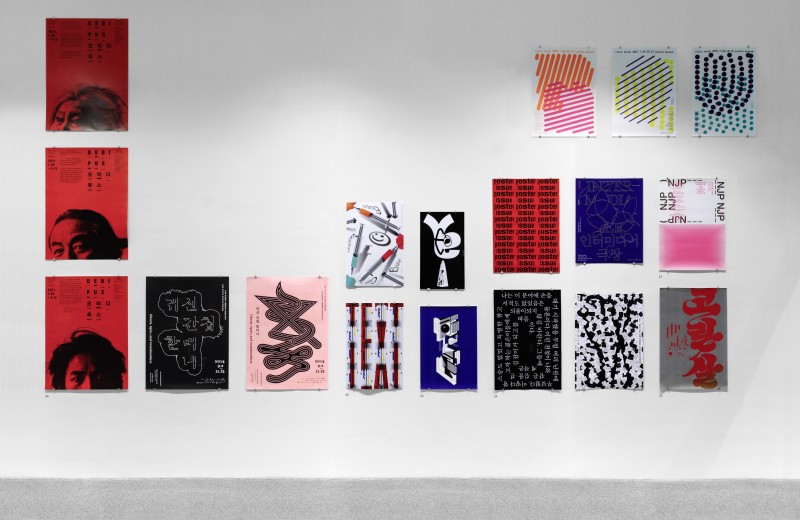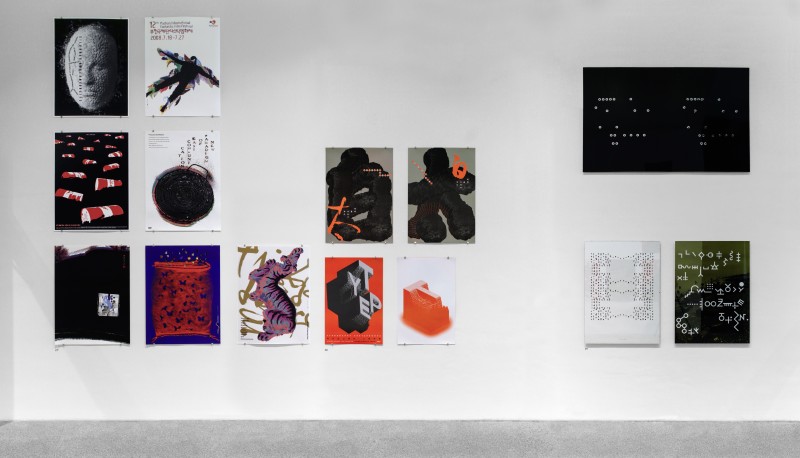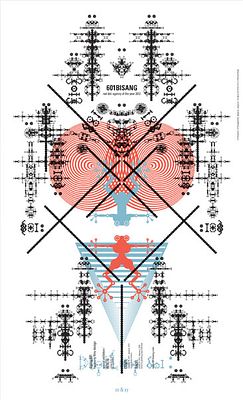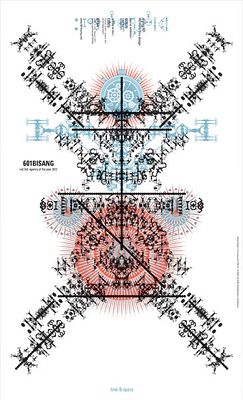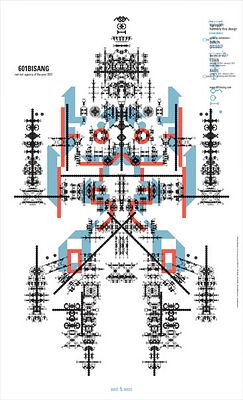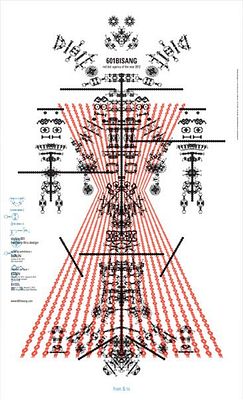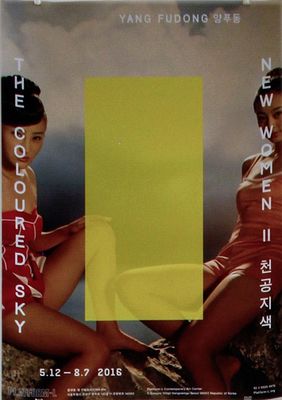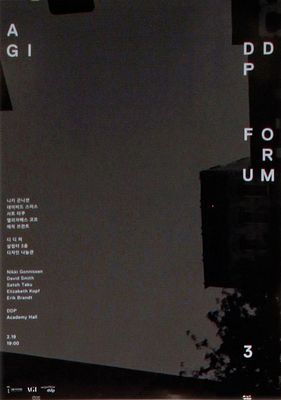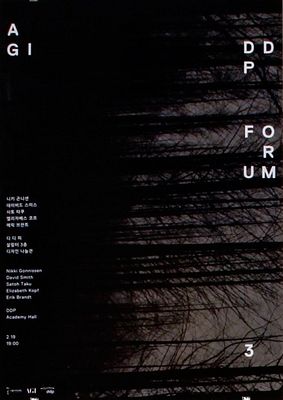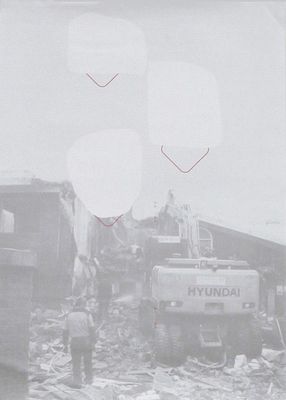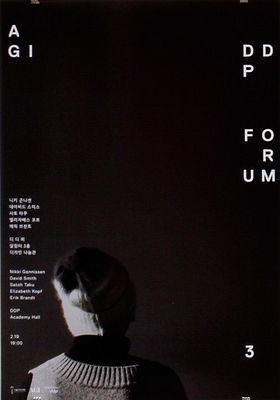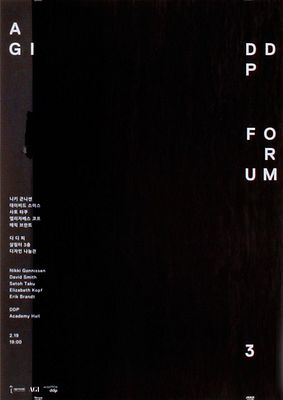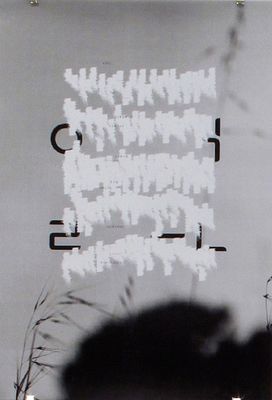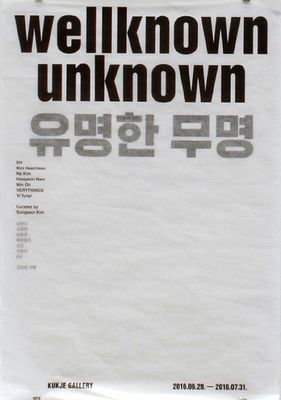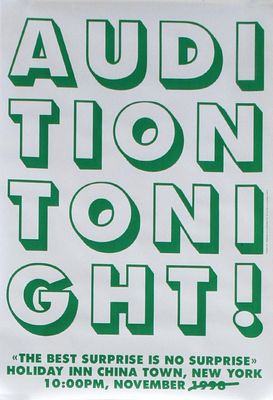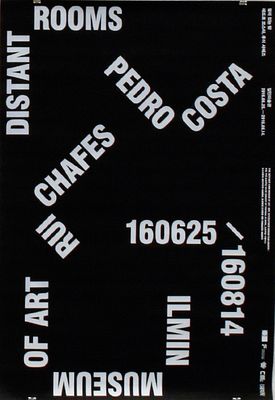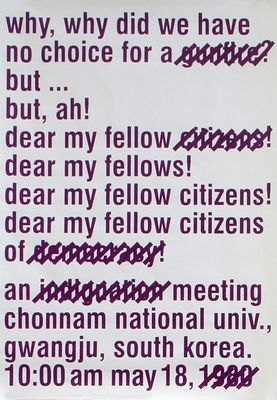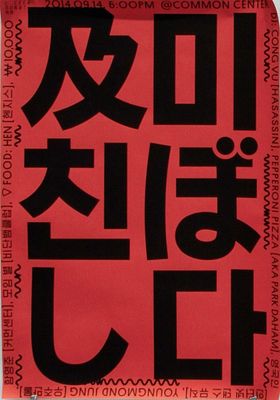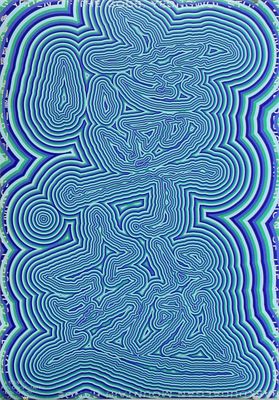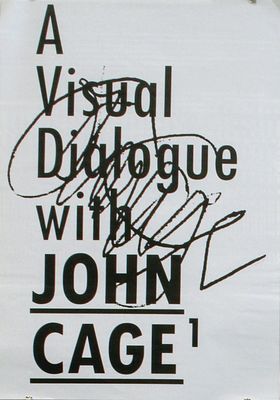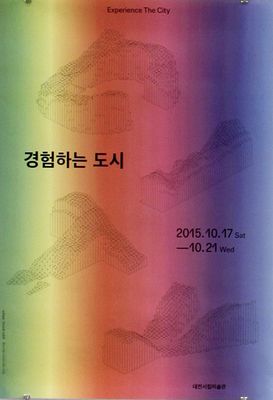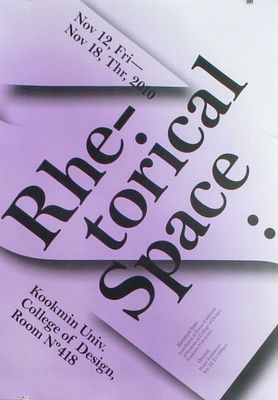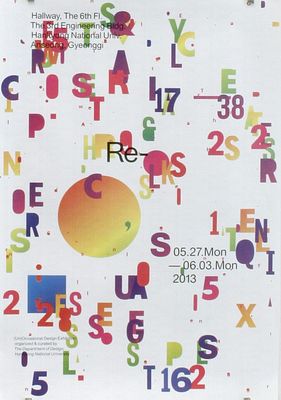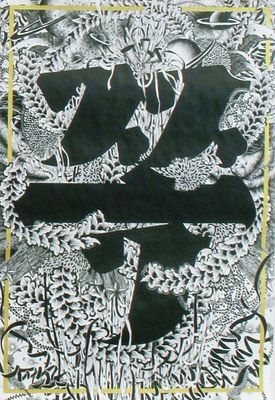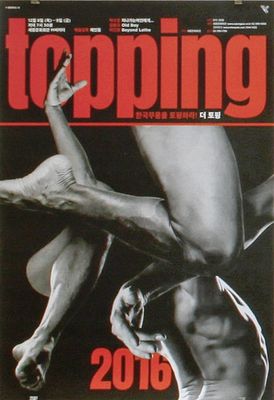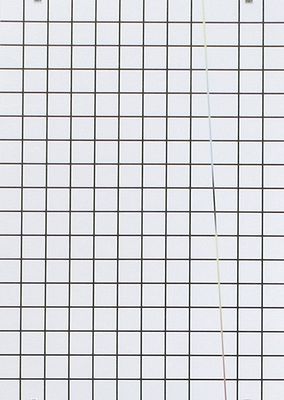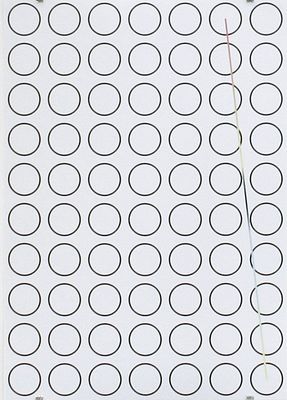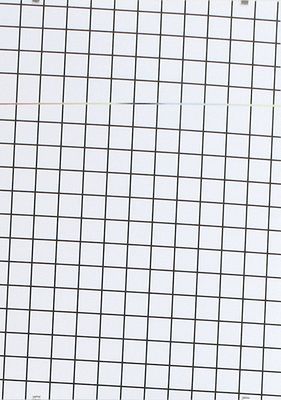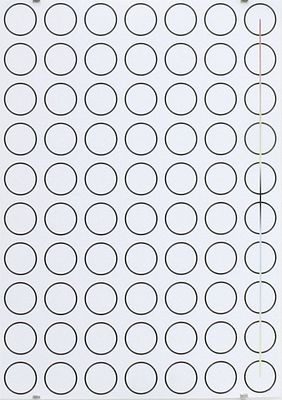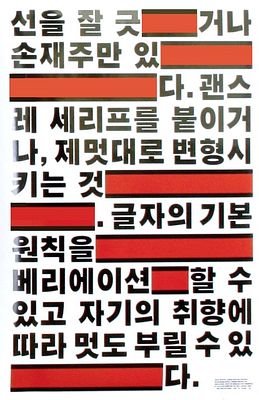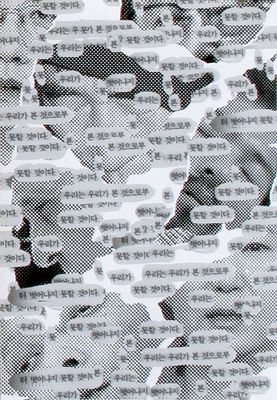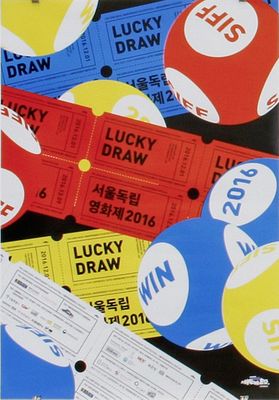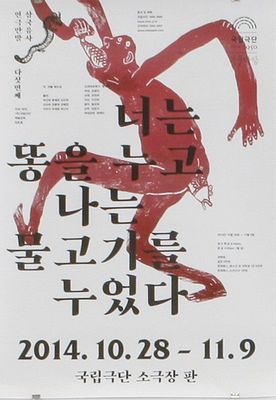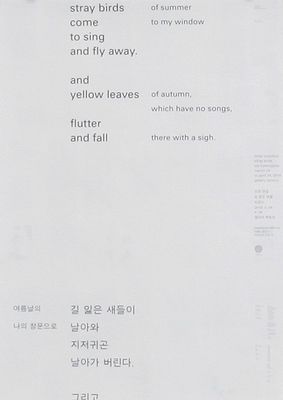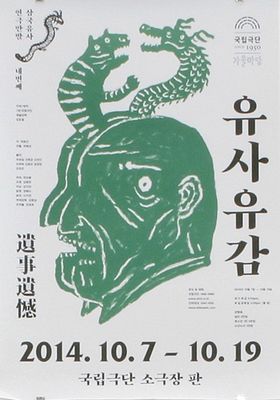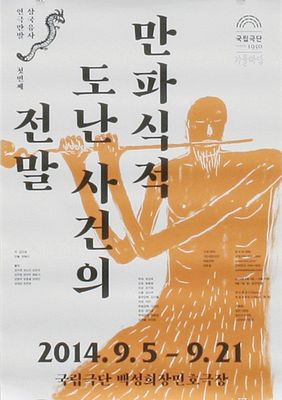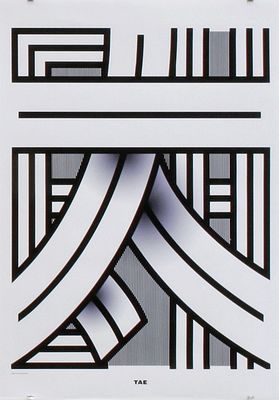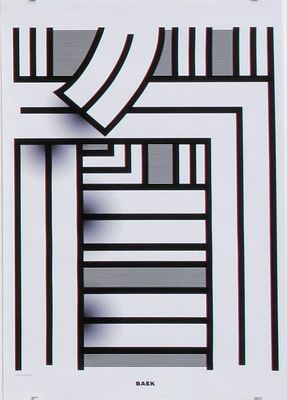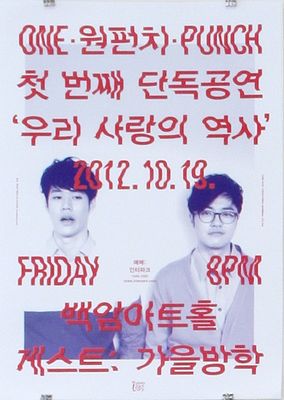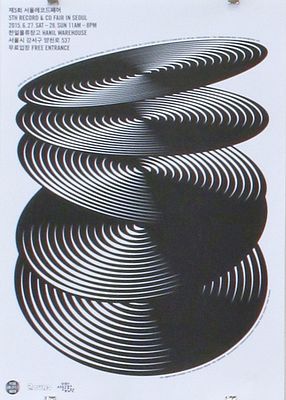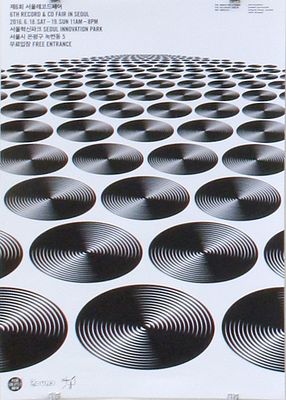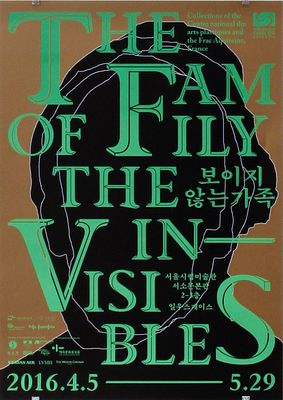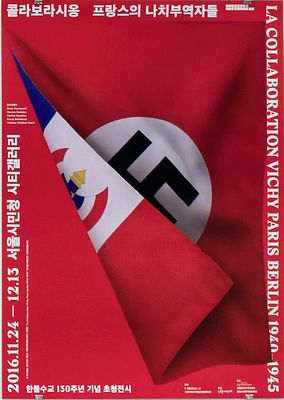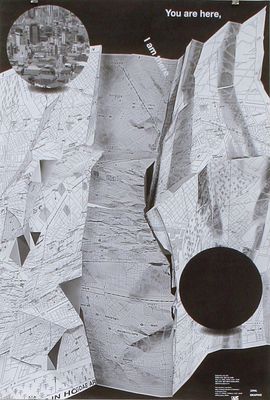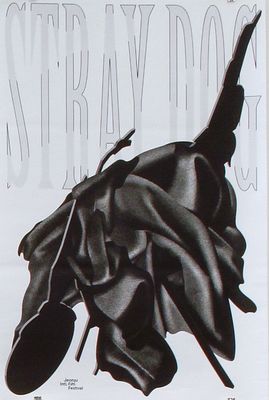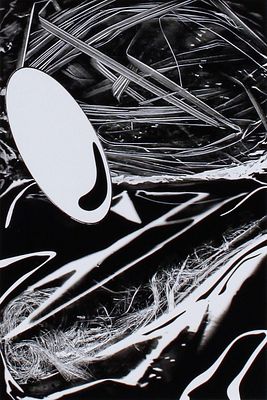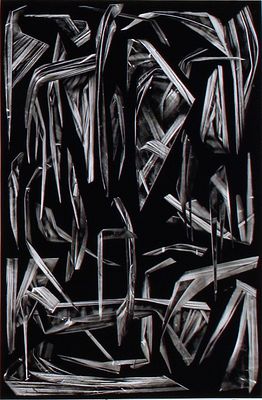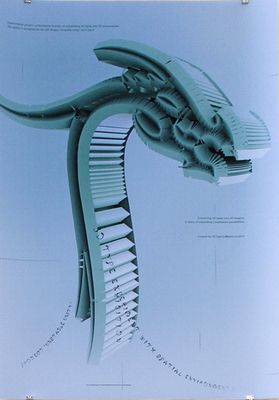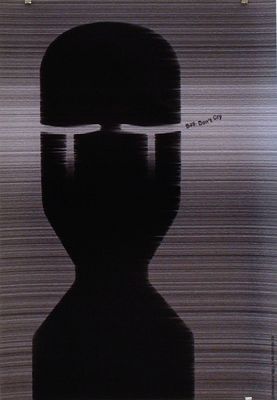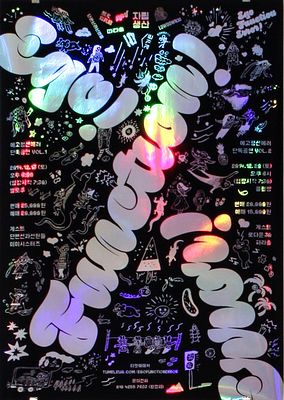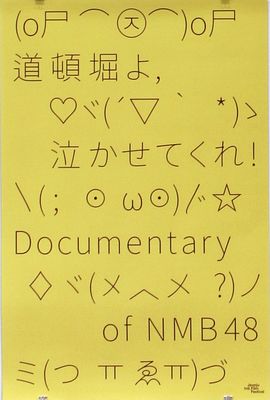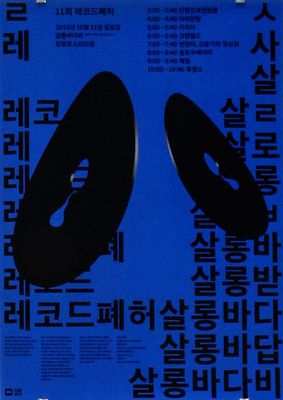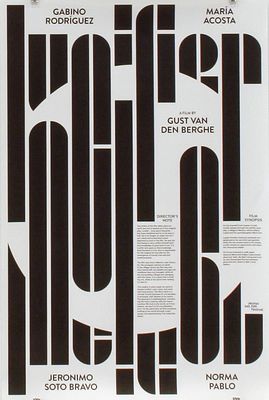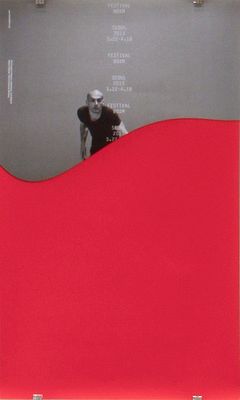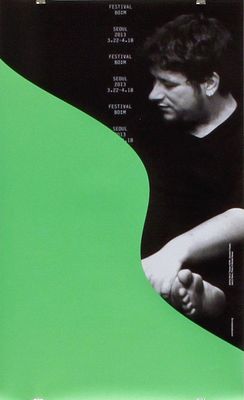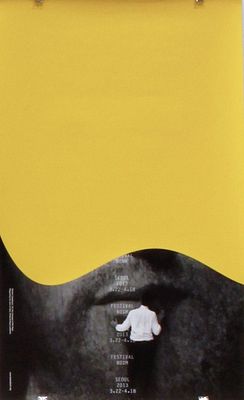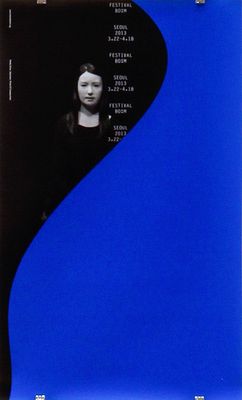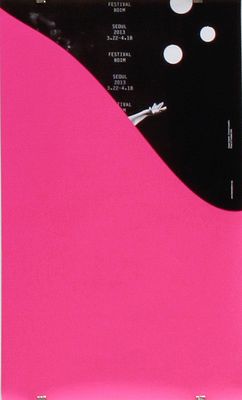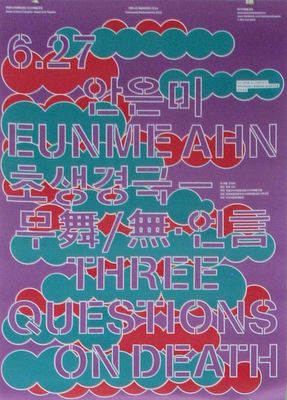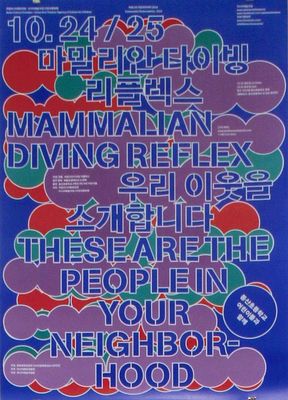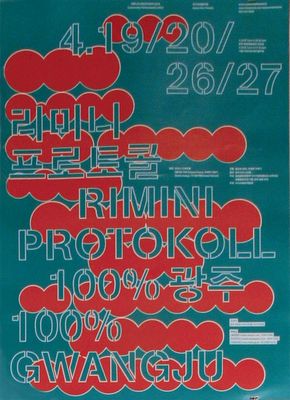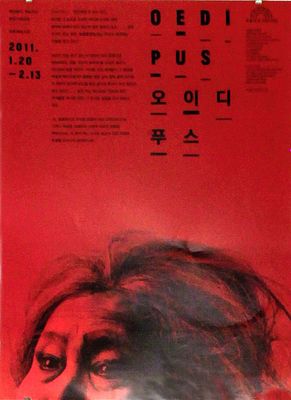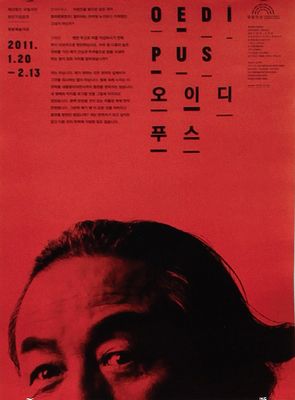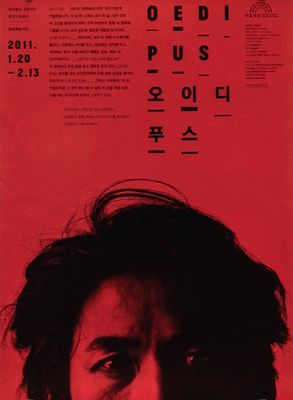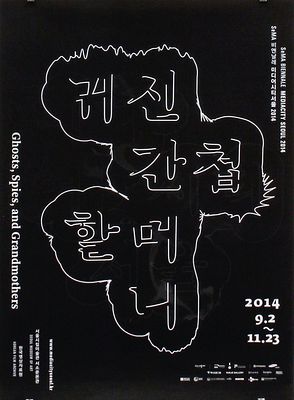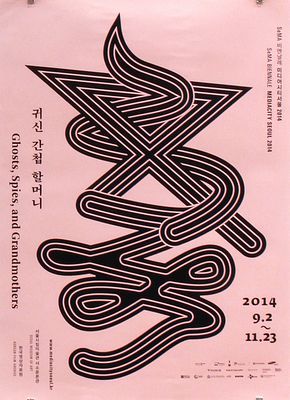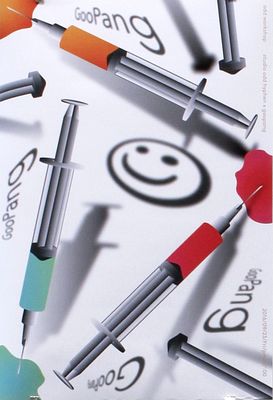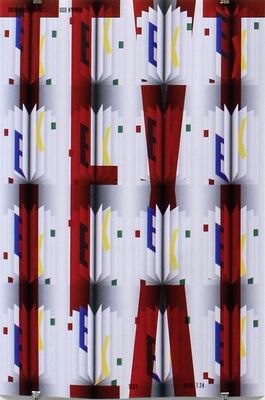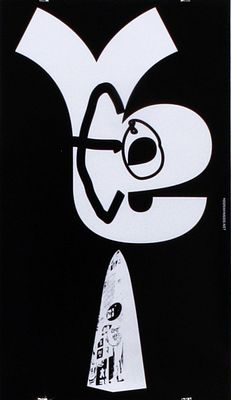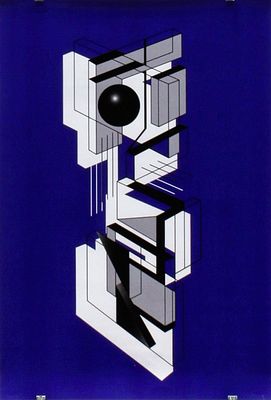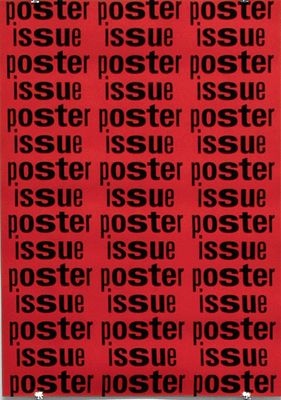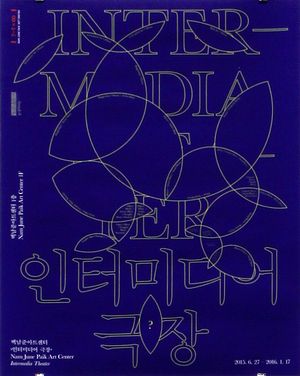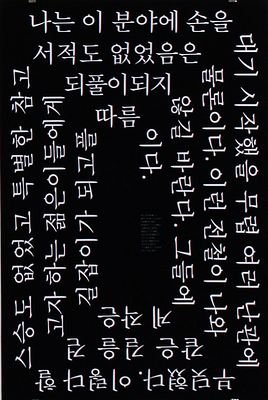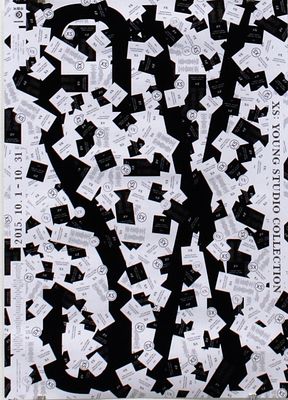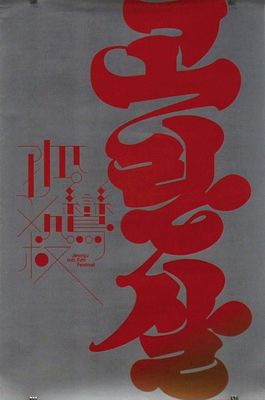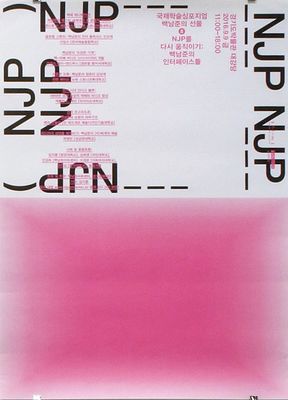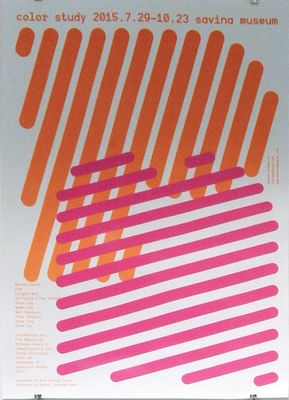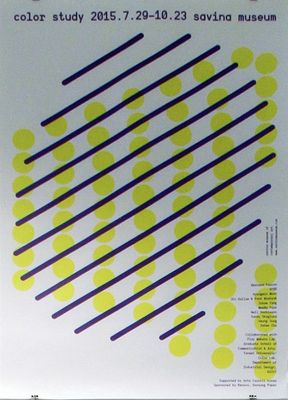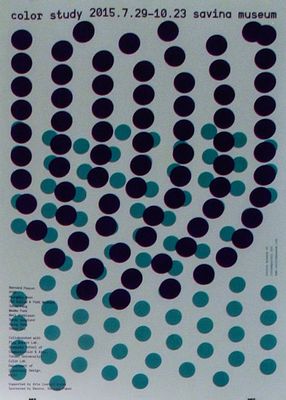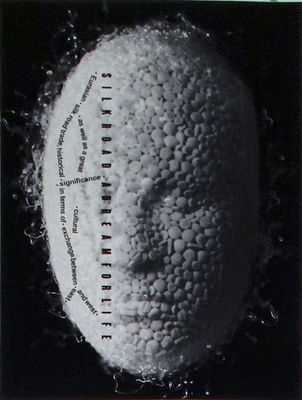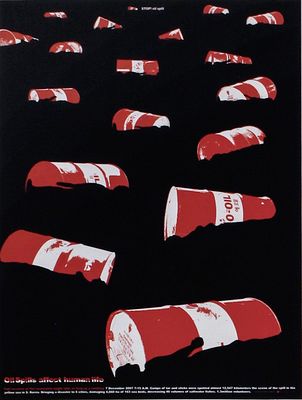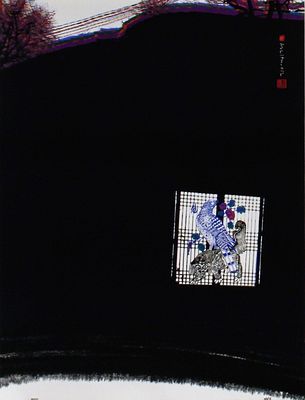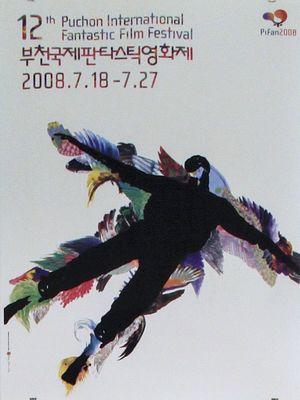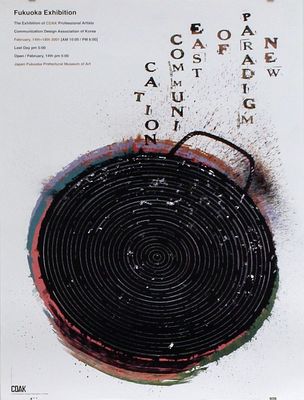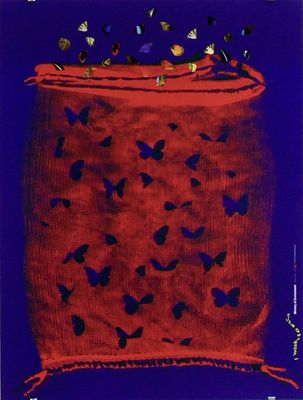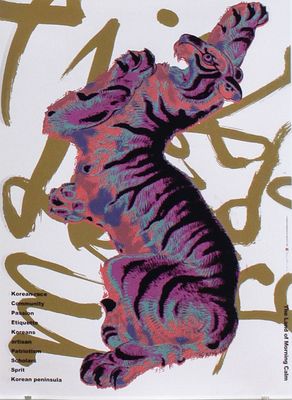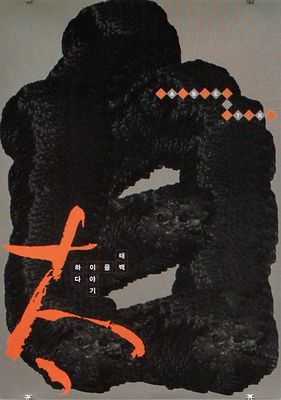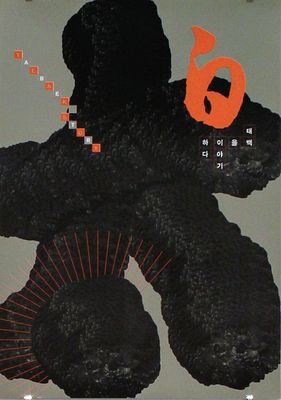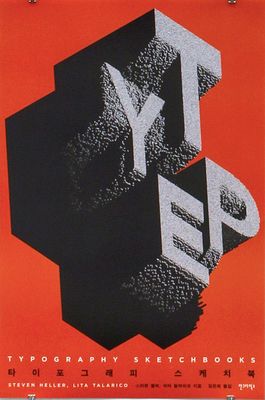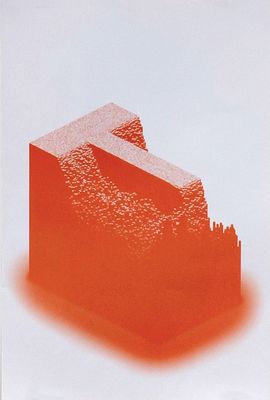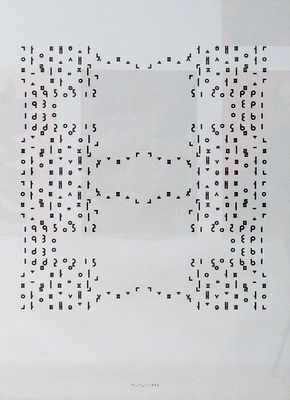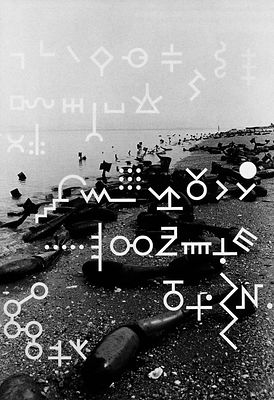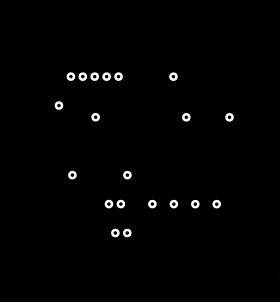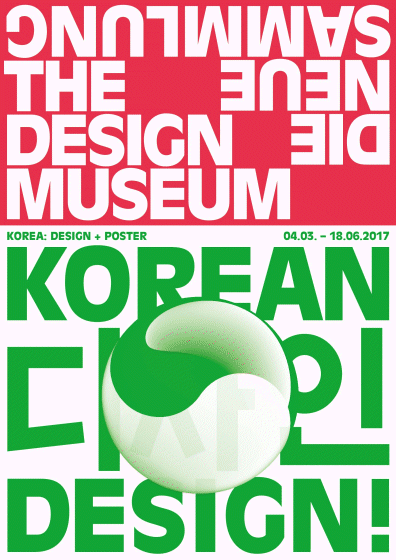
Exhibition poster by Mirko Borsche, Bureau Borsche
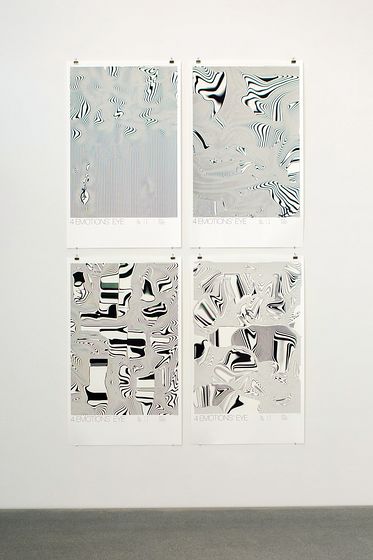
A presentation from the graphic design collection of Die Neue Sammlung,
starting in the context of MCBW 2017 partner country Korea
March 4 - July 16, 2017
Die Neue Sammlung - The Design Museum
Barer Strasse 40 / Pinakothek der Moderne
80333 Munich, Germany
Korea - the country in which long before Gutenberg books were printed using movable metal type and in the 15th century as part of a campaign to improve literacy a king had a script invented that was easier to learn, namely Hangul.
Korea - still a divided country. In 1910-1945 it was annexed by Japan and occupied, liberated in 1945, divided and re-occupied, in the north by the Red Army and in the south by the US Army. During the Cold War, two states bristling with weapons faced each other, both under the influence of a super-power... The Korean War 1950-1953.
While the economy blossomed in the Communist north until well into the 1960s thanks to ample natural resources, the poor and traditional agricultural south just started to industrialize from then on. Due to rapid economic growth South Korea emerged as one of the world's strongest economies, a leader specifically in several technology sectors.
The efforts of the "Economic Miracle"ť from the 1960s onwards, the battle against autocrats and a military dictatorship from the 1970s onwards, and the arduous transition to democracy since the late 1980s all meant design in the western understanding of the term first played a significant role from the 1990s onward. This applies to product design, and albeit differently, to graphic design, too. Here the emergence of new media essentially implied freeing the poster from commercial constraints - there has been a similar development in the West, too.
A scene of independent graphic designers arose, free in their thinking, not trammeled by having to service marketing departments, but focused fully on concepts and the graphic qualities of the designs; by contrast, communication for products, brands and other business purposes take place using LED screens, billboards, Internet advertising, etc. and is handled by large agencies.
North Korean propaganda posters already have caught the eye of collectors and publishing houses. A comprehensive study of South Korean poster art is however still missing. For the first time now Die Neue Sammlung is dedicating an exhibition specifically to this field.
Korean graphic design locks into Pop Art and comics, contemporary art and the Bauhaus (also via the "detour” of the influence the Bauhaus had in the USA), the Hochschule für Gestaltung Ulm, Swiss typography, and Dutch concept design -- it likewise resorts to stylistic elements of the 1960s to the 1980s ... In a globalized world the designers network globally. Contemporary Korean posters demonstrate this most impressively, with a great vibrant diversity into the bargain.
We asked some 25 South Korean graphic designers, mainly born in the 1970s and 1980s, to contribute current posters to the exhibition. We selected more than 100 of the works submitted, and they paint a very heterogeneous picture. What we witness is a quite open approach to the continual search for cultural identity, which permeates the intellectual discourse in South Korea.
Three posters designed in the 1990s by Sang-Soo Ahn, who is widely considered the "father of Korean graphic design”, reference the early days of the development.
The range of tasks primarily centers on posters for cultural institutions: for museums and galleries, film festivals and theater, and for the hardly commercial book and LP markets, publishing companies, Indie labels, bands and subcultural clubs. Another very important field: humanitarian causes, political protest, commemorations, ecology and initiatives to prevent the demolition of buildings. Many posters were freelance pieces created for competitions or exhibitions: as an artistic genre alongside others.
The exhibition highlights include typographical/philosophical pieces by the great Hangul reformer Sang-Soo Ahn - concrete poetry in poster form -, abstract and conceptual approaches, surreal fantasies and inquiries into photography in posters. 2D-3D transformations play a key part, and repeatedly, like a red thread, the aesthetics and expressiveness of Hangul letters. The major silkscreen series by Kum-Jun Park with their artistic ingenuity greet visitors in the museum lobby, point the way through the Rotunda to the poster exhibition, and guide them from the ground floor down the stairs to the basement, where the exhibition is continued with a section on Korean product design and arts & crafts.
We would like to most cordially thank the designers who have so kindly and generously contributed their works to this exhibition.
Curator:
Corinna Roesner
Exhibition participants
Ahn Sang-Soo
Chae Byung-rok
Chung Hoon-Dong
Daeki and Jun: Shim Daeki + Shim Hyojun
Everyday Practice: Kwon Jonghoo + Kim Kyung-chul + Kim Eojin
Golden Tree: Kim Namoo + An Hyojin
Huh Minjae = Studio Double-D
Jin and Park: Jin Dallae + Park Woohyuk
Jung Jinyeoul = Therewhere
Kang Goo-Ryong = Studio Chung Choon
Kim Bohuy = Studio odd hyphen
Kim Dohyung = grayoval
Kimgarden: Kim Kangin + Lee Yunho
Kim Na
Lee Jae-min = Studio FNT
Ordinary People: Kang Jin + Seo Jeong-min + Ahn Se-yong + Lee Jae-ha + Jeong In-jee
Park Kum-Jun = 601Bisang
Park Shinwoo = paper press
Chris Ro = ADearFriend
Shin Dokho
Sulki and Min: Choi Sulki + Choi Min
Sun Byoung-il
Workroom: Lee Kyeong-soo + Jeon Yong-wan + Kim Hyung-jin + Hwang Seogwon
Yoon Mingoo
Yu Myung-sang
read more
read details about designers and posters
See more posters from South Korea on Pinterest
See movie posters from South Korea on Pinterest
See posters from North Korea on Pinterest
